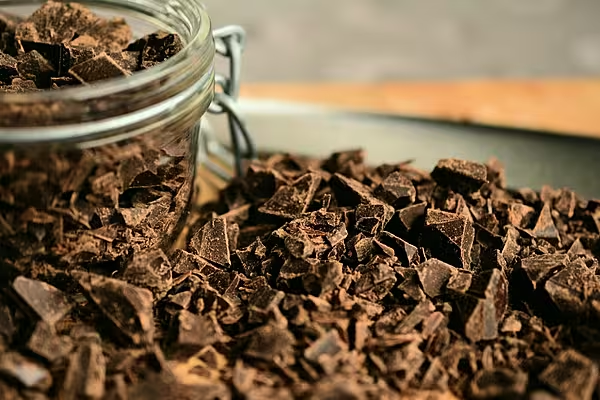Buyers in Europe's physical cocoa market are having to pay top dollar for quality beans from leading global producers Ivory Coast and Ghana to compete with stronger US prices, raising cost fears for grinders and chocolate makers.
The soaring prices could hit the cocoa users hard next season, especially if the upcoming crop disappoints, as they could be forced to buy large volumes at hefty premiums when they return to the market to restock.
Premiums for Ivory Coast cocoa are currently at £160 - £170 a tonne over spot London futures, their highest in about eight years, while Ghana premiums are around eight-year-highs of £300 - £350, five traders told Reuters.
The price surge comes as US futures climb to around $150 a tonne over London futures, marking a significant reversal for a market that has for years commanded a discount of around $150 - $200 to London.
'Huge Shortage'
"There's a huge shortage of near term supply. If you want to buy good quality beans in Europe, you're not going find them or they'll be very expensive," said a trader.
Although most cocoa users have stocked up for now, they will return to the market from October to restock.
"New York is now a lot more expensive than London, so good quality cocoa is drawn to the New York exchange. If you want to buy cocoa in Europe, you have to pay more to compensate for the difference," added the trader.
Despite the price surge on Europe's physical markets, leading producers Ivory Coast and Ghana have teamed up to impose a minimum price that chocolate companies and processors must pay if they want to access the more than 60% of global supply under their control.
The move is an attempt to ease the poverty of farmers that has become a blight on chocolate's image and a threat to the sector's future in West Africa.
Stocks Buffer Dwindles
London's cocoa futures' traditional premium to New York, which reflected stronger demand for cocoa in Europe, flipped in the second half of 2017 after a large volume of poor-quality cocoa from Cameroon hit the European exchange, while a chunk of Ivory Coast cocoa headed to New York.
While cocoa premiums have been recovering in Europe since the Cameroon supplies landed, the supply situation worsened this year as Europe's cocoa stocks dwindled while demand strengthened. Europe's first quarter cocoa grind, a proxy for demand, rose 3.3% in the first quarter, industry data shows.
"Every bean produced has been consumed by industry, traders have very little stock," said a second trader.
Around 75% of the roughly 122,000 tonnes of cocoa currently certified in ICE Europe exchange warehouses is from Cameroon, exchange data indicates.
By contrast, about 5,100 tonnes, or half the total certified stock in ICE New York exchange warehouses, is from the Ivory Coast. Two years ago that number was less than 10%.
Surplus Cameroon Cocoa
"There’s a lot of surplus Cameroon cocoa that’s effectively changed the basis of the London market. London no longer reflects good quality cocoa," said an industry consultant.
Certified stocks represent only a small slice of all the cocoa in the US, and one UK-based dealer estimates about 20,000-25,000 tonnes of Ivory Coast cocoa has gone to the US over the last six months alone.
"There's almost no off exchange cocoa in Europe. There is cocoa on exchange, but it's in one or two strong hands," said a second trader. He added the exchange cocoa is in any case undesirable for commercial buyers as it is mostly from Cameroon.
The cocoa shortage in Europe's physical market coupled with the concentration of exchange cocoa in the hands of a couple of traders who expected higher prices and were unwilling to sell, pushed the premium for ICE Europe May cocoa futures to a nine year high over July futures last month.
"Market forces should sort this out. Eventually Cameroon cocoa will become so cheap compared to other origins that if you're a processor, you'll use it, it will disappear and the market will go back to normal," said a third trader.
Until such time though, rising costs for European cocoa buyers will remain a concern.
News by Reuters, edited by ESM. Click subscribe to sign up to ESM: European Supermarket Magazine.














